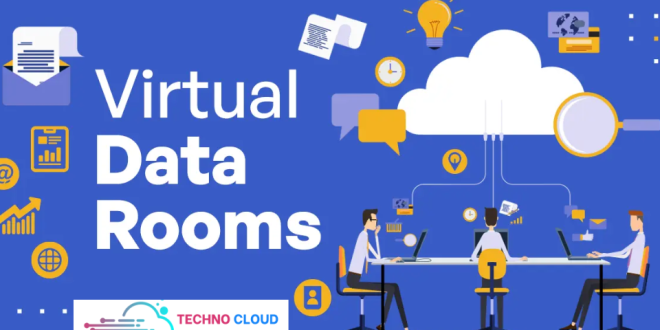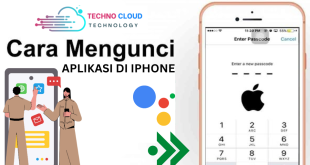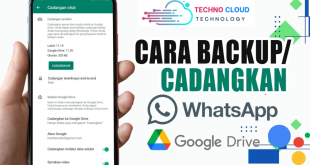Hi, Friends of Technology! Do you need a secure and efficient way to store and share your confidential data online? If you do, you might want to consider using a virtual data room (VDR). A VDR is an online platform that allows you to store and share sensitive documents and information with your internal teams, external partners, and potential investors. VDRs are widely used for critical business processes such as mergers and acquisitions, due diligence, and legal transactions. But how reliable is a virtual data room? How can you ensure that your data is safe and accessible at all times? In this article, I will answer these questions, and show you how to choose and use the best VDR for your needs. Stay tuned!
One of the pain points that many businesses face when dealing with confidential data is the risk of data breaches, leaks, or losses. Data breaches can have devastating consequences for your business, such as reputational damage, legal liabilities, financial losses, and competitive disadvantages. Data leaks can also compromise your business negotiations, deals, or partnerships, as your sensitive information can fall into the wrong hands. Data losses can occur due to human errors, technical glitches, natural disasters, or cyberattacks, and can result in data corruption, deletion, or unavailability. Therefore, you need a reliable solution that can protect your data from these threats, and ensure that your data is always secure and accessible.
A virtual data room is a reliable solution that can provide you with the highest level of data security and availability. A VDR has several features that make it more reliable than other data storage and sharing methods, such as email, cloud storage, or physical data rooms. Some of these features are:
• Encryption: A VDR encrypts your data both at rest and in transit, meaning that your data is protected from unauthorized access or interception. Encryption also ensures that your data is intact and unaltered, as any tampering or modification will be detected and prevented.
• Watermarking: A VDR adds dynamic watermarks to your documents, which display the name, date, time, and IP address of the user who accesses or downloads the document. Watermarking helps you to deter and track any unauthorized copying, printing, or sharing of your documents.
• Access control: A VDR allows you to grant different levels of access to your documents, based on the role, responsibility, and trustworthiness of the user. You can also set expiration dates, time limits, or IP restrictions for your documents, to prevent unauthorized or prolonged access. Additionally, you can revoke or modify access rights at any time, in case of any changes or issues.
• Audit trail: A VDR keeps a detailed record of all the activities that take place in your data room, such as who accessed, viewed, edited, downloaded, or shared your documents, and when and where they did so. Audit trail helps you to monitor and manage your data room, and to identify and resolve any problems or anomalies.
• Backup and recovery: A VDR backs up your data regularly and automatically, and stores it in multiple secure locations. Backup and recovery ensures that your data is always available and recoverable, even in the event of any data loss or disaster.
I have used a virtual data room for several business projects, and I can attest to its reliability and effectiveness. I used a VDR for a merger and acquisition deal, where I had to share a large amount of confidential data with multiple parties, such as lawyers, accountants, bankers, and investors. I chose a VDR provider that offered me the best security features, such as encryption, watermarking, access control, audit trail, and backup and recovery. I was able to upload, organize, and share my data easily and quickly, and to control who could access, view, edit, or download my data. I was also able to monitor and manage my data room, and to track the progress and performance of the deal. I was very satisfied with the outcome, as I was able to complete the deal successfully and securely, without any data breaches, leaks, or losses.
Besides using a virtual data room for mergers and acquisitions, you can also use a VDR for other purposes, such as:
• Due diligence: Due diligence is the process of verifying and evaluating the financial, legal, operational, and strategic aspects of a business or a deal. Due diligence requires you to share and review a large amount of sensitive data, such as financial statements, contracts, licenses, patents, and customer lists. A VDR can help you to conduct due diligence efficiently and securely, by allowing you to store and share your data online, and to collaborate with your stakeholders in real time. A VDR can also help you to reduce the time and cost of due diligence, as you can avoid the hassle and expense of physical data rooms, travel, or courier services.
• Legal transactions: Legal transactions are the processes of creating, reviewing, signing, and exchanging legal documents, such as contracts, agreements, or deeds. Legal transactions involve multiple parties, such as lawyers, clients, or third parties, and require a high level of accuracy, compliance, and confidentiality. A VDR can help you to facilitate legal transactions smoothly and securely, by allowing you to store and share your legal documents online, and to sign them electronically. A VDR can also help you to ensure the validity, enforceability, and auditability of your legal documents, as you can track and record all the changes and signatures made to them.
• Fundraising: Fundraising is the process of raising capital from investors, such as venture capitalists, angel investors, or crowdfunding platforms. Fundraising requires you to share and present your business plan, financial projections, market analysis, and other relevant data, to convince your potential investors to invest in your business. A VDR can help you to raise funds effectively and securely, by allowing you to store and share your data online, and to showcase your business potential and credibility. A VDR can also help you to attract and engage more investors, as you can reach a wider and more diverse audience, and provide them with a convenient and professional data room experience.
Questions and Answers Related to how reliable is a virtual data room
Here are some questions that are frequently asked by people who want to use a virtual data room, along with the answers and examples:
- How to choose the best virtual data room provider?
To choose the best virtual data room provider, you should consider several factors, such as the security features, the functionality features, the pricing plans, the customer support, and the reputation of the provider. You should compare different providers based on these factors, and select the one that meets your needs and expectations. You can also read reviews, testimonials, or case studies from other customers, or request a free trial or a demo from the provider, to get a better idea of their service quality and performance. - How to use a virtual data room effectively?
To use a virtual data room effectively, you should follow some best practices, such as:- Plan ahead: You should plan your data room project in advance, and define your goals, objectives, timeline, and budget. You should also identify your data room users, and assign them roles and access rights accordingly.
- Organize your data: You should organize your data in a logical and structured way, and use folders, subfolders, labels, or tags to categorize your data. You should also name your files and folders clearly and consistently, and use metadata, descriptions, or comments to provide more information about your data.
- Monitor your data room: You should monitor your data room regularly, and check the status, activity, and performance of your data room. You should also use the audit trail, reports, or analytics features to track and measure the progress and results of your data room project.
- Communicate with your users: You should communicate with your data room users frequently, and provide them with guidance, feedback, or updates. You should also use the chat, Q&A, or notification features to facilitate communication and collaboration among your users.
- What are the benefits of using a virtual data room?
The benefits of using a virtual data room are numerous, such as:- Security: A virtual data room provides you with the highest level of data security and protection, and prevents any data breaches, leaks, or losses.
- Efficiency: A virtual data room allows you to store and share your data online, and to access and manage your data anytime and anywhere, which saves you time and cost.
- Convenience: A virtual data room allows you to store and share your data in a centralized and standardized way, and to collaborate with your users in real time, which improves your workflow and productivity.
- Transparency: A virtual data room allows you to monitor and control your data room, and to track and measure your data room project, which enhances your accountability and compliance.
- Competitiveness: A virtual data room allows you to showcase your data in a professional and attractive way, and to impress and persuade your potential partners or investors, which increases your chances of success.
Conclusion Related to how reliable is a virtual data room
That’s the article that I created about how reliable is a virtual data room. I hope this article is useful for you, and helps you to understand and use a virtual data room for your business needs. If you have any questions, suggestions, or feedback, please leave a comment below. Thank you for reading, and see you in the next article!
 TECHNO CLOUD BERITA TERBARU SEPUTAR TEKNOOGI
TECHNO CLOUD BERITA TERBARU SEPUTAR TEKNOOGI



